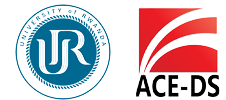Skip to main content
- General programming techniques
- Python environment. Data structures: numbers, strings, lists, tuples, dictionaries. Basic language elements: loops, conditions, functions. Modules. Input and Output. Debugging. Machine learning and data mining in Python.
- The NumPy package for scientific computing
- The pandas data analysis library, including reading and writing of CSV files
- The IPython and PyDev development environments
- The Seaborn and Matplotlib 2D plotting library(drawing attractive statistical graphics and visualizations)
- Language concepts of R: variables, vectors, matrices, data frames
- R environment
- Data manipulations.
- Importing data from text and spreadsheet files.
- Using external R packages.
- Graphics
